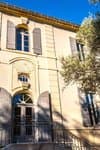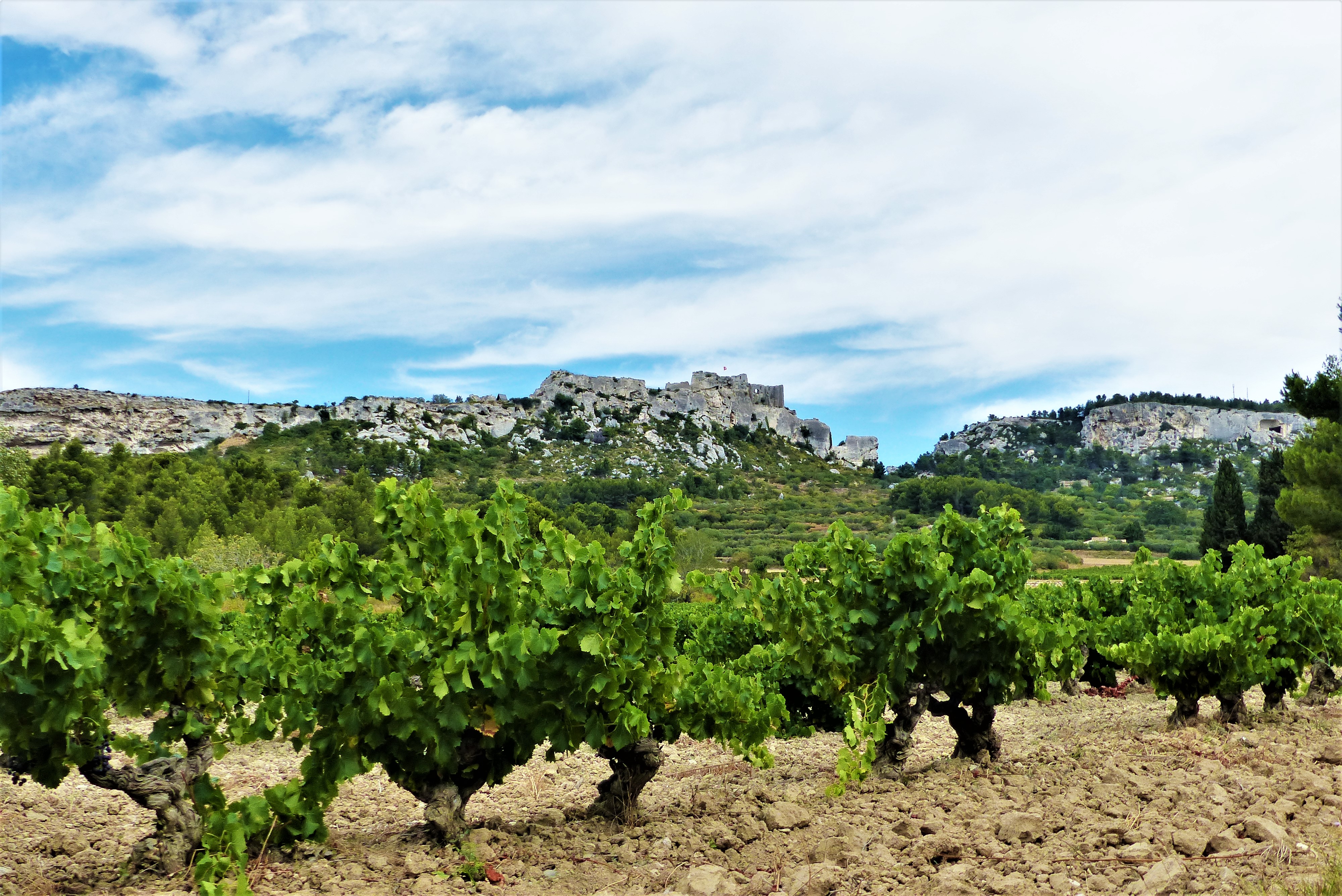
LES BAUX DE PROVENCE - The Baumayrane ridges
"Discover man-made landscapes, such as olive groves and vineyards in the Baux-de-Provence valley. You can also observe the wild nature on the Baumayrane peaks. Finally, by the way of the Lombards which climbs in laces on 3 km, you will also be able to reach a panoramic point of view opening on the north of Alpilles and Mont Ventoux. " Anastasia Zhukova, Baux-de-Provence tourism office.
12 points of interest

Les Carrières de Lumières - ©Rémi Sérange - PNR Alpilles  Patrimony and history
Patrimony and historyCarrières de Lumières
First known as the Grands Fonts quarry, this stone quarry site ceased operations in 1935. In 1959, the place is reinvested by Jean Cocteau who turns there "The Testament of Orpheus". Then, from 1977, the old quarry was rehabilitated as a cultural center, offering innovative sounds and lights on the rock walls.. This exceptional site, now called "Carrières de Lumières", offers an immersion in the heart of the works of renowned painters.
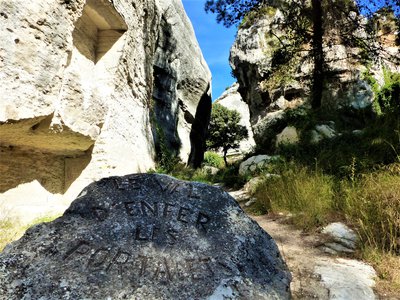
Val d'Enfer, les Portalets - ©Sarah Boggio-Pola - PNR Alpilles  Geology
GeologyVal d'Enfer
The Val d'Enfer is a valley famous for its rocks with strange shapes, sculpted by erosion. There are also impressive openings in the rock along the road and traces left by limestone quarries. at nightfall, many thought they recognized the rocks and caves of "The Hell" from Dante. ;Jean Cocteau, another great writer turned filmmaker, shot his "Testament d'Orphée" in 1959, in the natural setting of Val d'Enfer.

Pavillon de la Reine Jeanne - ©Rémi Sérange - PNR Alpilles  Patrimony and history
Patrimony and historyPavilion of Queen Jeanne
In this small park of the valley of the Fountain, is the pavilion of Queen Jeanne. This historic monument from the 14th century. represents a Renaissance style temple. Commissioned by Jeanne de Quiqueran, then Baroness des Baux and wife of Honoré des Martins, Baron des Baux from 1568 to 1581, he was erected in the corner of a small French garden, belonging to their family. The writer Frédéric Mistral had the replica of this pavilion built to adorn his tomb in the cemetery of Maillane.
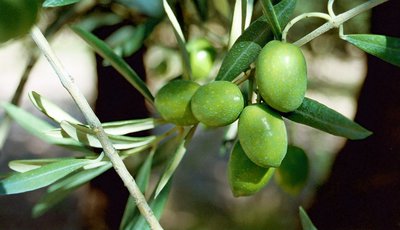
Olives AOP des Baux-de-Provence - ©Office de tourisme des Baux-de-Provence  Produits du terroir
Produits du terroirPDO Valley des Baux-de-Provence
In respect of olives and olive oils, the protected designation of origin "Valley of Baux-de-Provence" is today the symbol of quality. It was obtained on August 31, 1997 for three products: broken green olives, pitted black olives and olive oil. The olive trees bathed in the Provencal sun produce "Ardente" olive oils with fruity aromas. To note : olive oil from the Baux-de-Provence Valley currently accounts for 30% of national production!
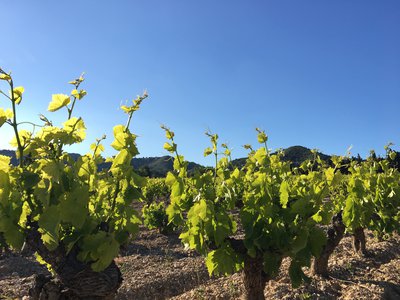
Vignes AOP des Baux-de-Provence - ©Office de tourisme des Baux-de-Provence  Produits du terroir
Produits du terroirAOP Les Baux-de-Provence
The Protected Designation of Origin "Les Baux-de-Provence" was obtained for the wines, in 1995. It now includes 12 producers who cultivate 350 hectares of vineyards on the northern and southern slopes of the Alpilles, for an annual production of 9,000 hectolitres. This production is obtained 85% in organic farming. The producers are also willing to include this specificity as a mandatory criterion, so as to become the first organic PDO wine in France.
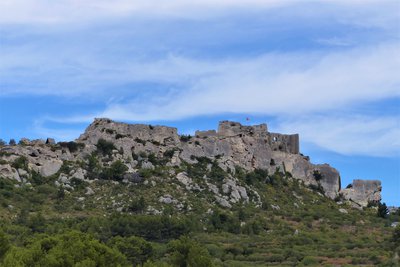
Château des Baux-de-Provence - ©Rémi Sérange - PNR Alpilles  Panorama
PanoramaCastle of Baux-de-Provence
Between vineyards and olive trees, stands the castle of Baux-de-Provence. The oldest remains of the medieval castle of Les Baux date back to the 12th century. On the same date, the village around the castle already existed, with its few streets, its houses partly troglodytes (dug in the rock) and its two churches: Saint-Vincent in the middle of the houses on the spur and Saint-André with its cemetery at the foot of the slope.

Cave et vigne du Mas Saint Berthe - ©Rémi Sérange - PNR Alpilles  Produits du terroir
Produits du terroirMas Sainte-Berthe
The Mas Sainte-Berthe estate is a vineyard of 40 hectares, included in the Protected Designation of Origin (PDO) area of ??Les Baux-de-Provence. Formerly "House with fields" of the lord of Mollières, the domain was bought by the David family in 1950. Fascinated by wine, she undertakes the gradual conversion of land, previously populated by apricot trees. The cellar was inaugurated in 1976.
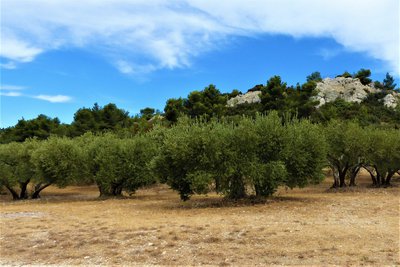
Oliveraie AOP de la Vallée des Baux-de-Provence - ©Rémi Sérange - PNR Alpilles  Produits du terroir
Produits du terroirThe trunk of olive trees
In the Alpilles, the majority of olive trees do not have thick trunks, but are composed of several trunks (3-4 in general) that grow in a circle. These are the trunks of the same tree, which pushed back from an old strain received during the terrible frost of 1956. Because of this phenomenon, the olive tree of the Baux valley was almost replaced by vine.

Vue sur la plaine d'Entreconque - ©Rémi Sérange - PNR Alpilles  Panorama
PanoramaView on the Entreconque lowland
Today, the Entreconque lowland contains agricultural landscapes composed of vineyards and olive trees. His farming has evolved over the centuries. Here, wheat was cultivated in the Roman era, then it was replaced by almond trees in medieval times, which gave way to the culture of the olive tree in modern times. After a major freeze in the 1950s, which destroyed most of the olive trees, the vine was in turn significantly implanted.
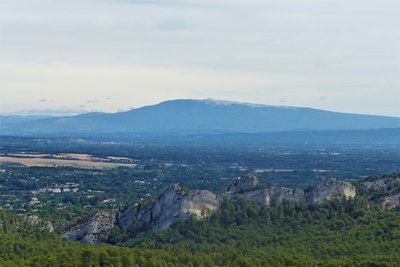
Vue sur le Mont Ventoux - ©Rémi Sérange - PNR Alpilles  Panorama
PanoramaView of Mont Ventoux
Mont Ventoux is the highest peak of the Vaucluse, culminating at 1,911 m. Its altitude makes it visible from afar. In summer, we can notice it at its white summit, suggesting snow. Called also the "Bald mount", the Mont Ventoux owes the whiteness of its summit to the absence of vegetation which leaves its calcareous rocks visible, but also to snow in winter period.
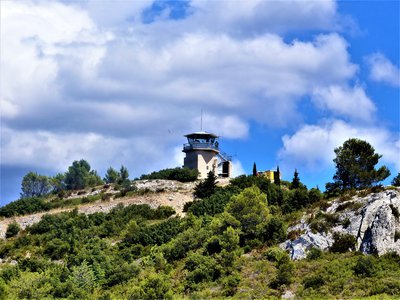
Vigie incendie - ©Rémi Sérange - PNR Alpilles  Savoir-faire
Savoir-faireWatchtower
The Defense of the Forest Against the Fires is articulated around the watchtowers strategically placed at the mountain summits, which allow a 360 ° C view on the Alpilles massif. In summer, they are the meeting point of the various actors operating against fires. From there, they can quickly identify fire departures and deploy the necessary means for interventions.

Bancs calcaires apparents - ©Rémi Sérange - PNR Alpilles  Geology
GeologyLimestone Benches
Following the tectonic pressures of the Eurasian and African plates, and the pleating of the rocks that it created, the Alpilles massif allows to find visible geological strata, called "limestone bench". These strata each correspond to a sedimentary ensemble;which has been formed over many years between two parallel surfaces. ;
Description
Back to the Carrières de Lumières car park, take the road on the left, and go directly left on a road marked PR. Continue down this road until the D27 Turn right and follow this road to the entrance of the Baumanière hotel.
1- Cross the road to reach a Department sign and take the path marked PR. At the fork, follow the path marked PR on the right. At the next intersection, turn right and then left just before a Canadian crossing. 500 m further, join another intersection and its Canadian crossing.
2- bifurcate to the left on a tarmac path marked PR. Pass the Sainte-Berthe Mas and continue until the D27. Cross it, then after 150 m take path on the right marked PR. Follow it for 800 m until you reach a crossroads. Cross it and continue straight. At the next intersection keep left and join a hairpin bend.
3- At the bend, take a path marked PR on the left, preceded by a hard-wired barrier. Climb this track in laces for 3 km. At the intersection marked with a cairn, turn left on the track marked GR®, following the sign of the Department "Les Baux-de-Provence 3.7 km". At the next intersection, stay on the GR®6 and follow it for 1.7 km to a cistern.
4- 100 m further, go down on the left the marked path PR, indicated by the sign of the Department "Les Baux-de-Provence by the Val d'Enfer 2 km". At the next junction, continue straight until you reach the D27 road. Follow it to the left to find the starting point.
- Departure : Carrières de Lumières Parking, Les Baux-de-Provence
- Arrival : Les Baux-de-Provence
- Towns crossed : Les Baux-de-Provence
Forecast
Altimetric profile
Recommandations
For your safety, and for the preservation of forest areas, access to natural areas is regulated from June to September. Inquire during the summer period on 08 11 20 13 13 (price of a local call) or on www.bouches-du-rhone.pref.gouv.fr Download the application for free MYPROVENCE ENVIE DE BALADE (available on Appstore and Android Market).
Information desks
House of the Alpilles Regional Nature Park
2, boulevard Marceau, 13210 Saint-Rémy-de-Provence
Located in the heart of the city centre of Saint-Rémy-de-Provence, the House of the Alpilles Nature Park welcomes you to its completely renovated premises. This new vibrant place is multifunctional: it accommodates the Park's engineering team but also has a public reception space and showrooms. A true resource centre of the Park's heritage, it aims to support and promote locals, visitors and tourists on all 16 municipalities of the Park.
Open Monday to Friday, from 9 am at 12:30 pm and from 1:30 pm to 5 pm.
Free admission.
OT Les Baux-de-Provence
Rue Porte Mage, Maison du Roy, 13520 Les Baux-de-Provence
Transport
Access and parking
Parking :
Report a problem or an error
If you have found an error on this page or if you have noticed any problems during your hike, please report them to us here:

